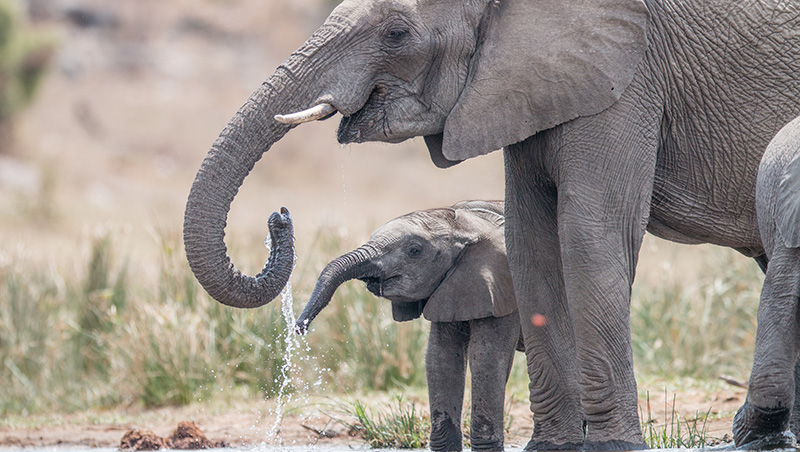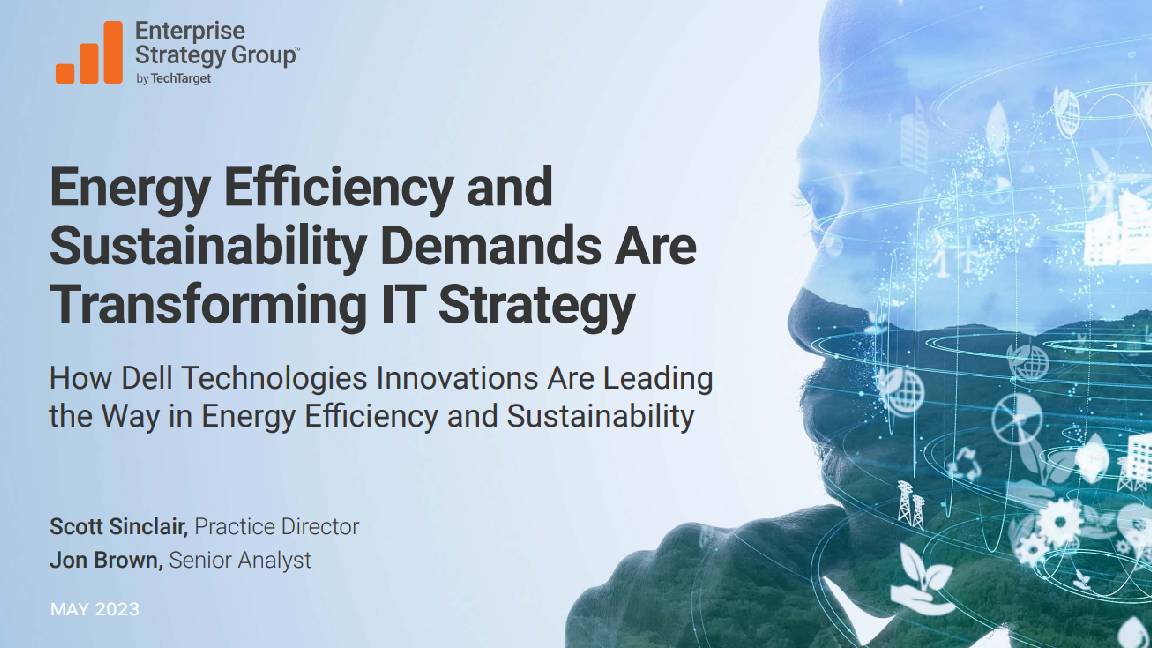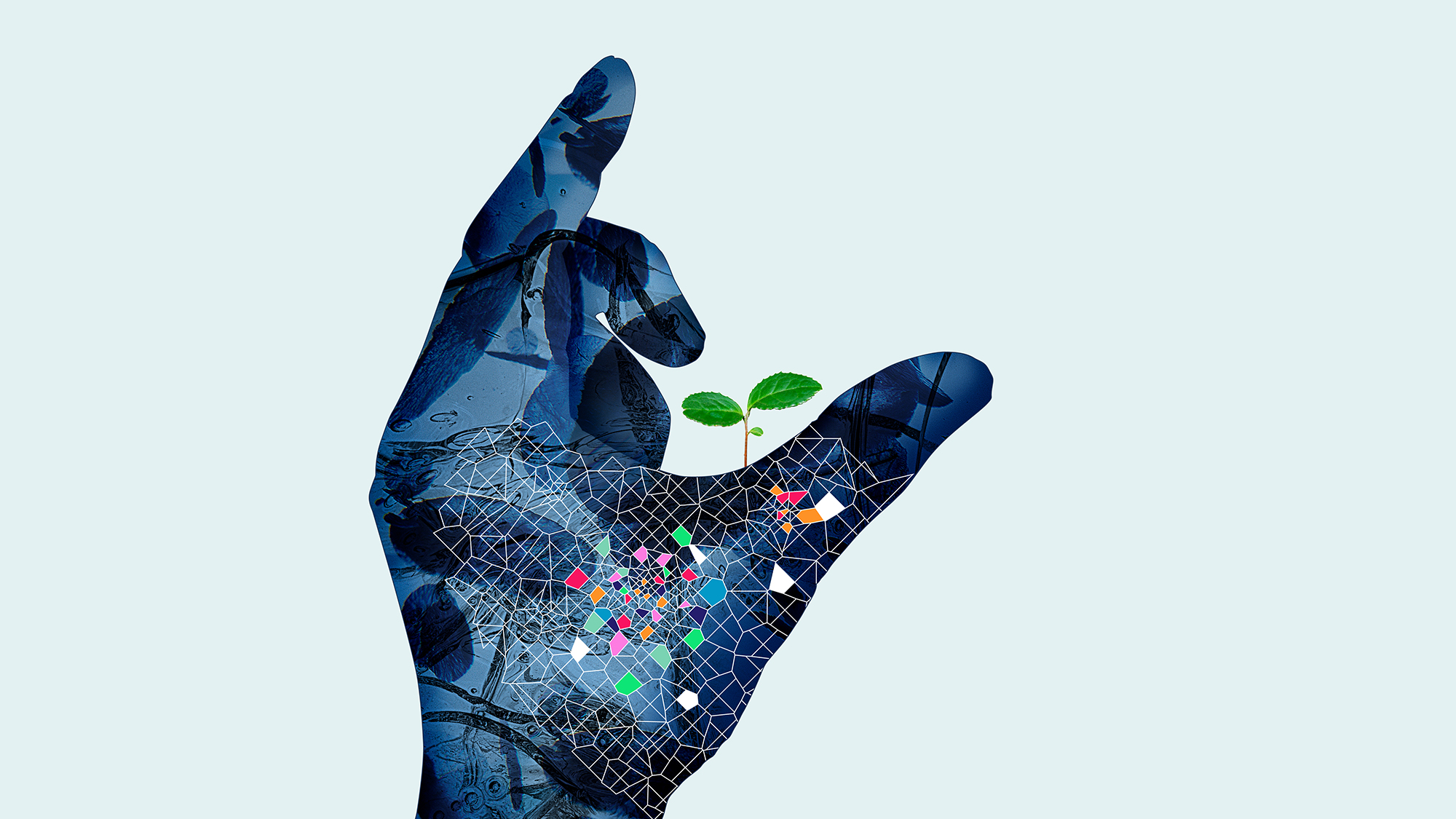How technology assists conservation and sustainability efforts
From the IoT to AI, tech can offer solutions to some of the world's biggest ecological questions

The relationship between technology and the environment is rarely perceived as harmonious. For quite some time, it's been argued that technology does more harm than good for the planet, whether it be the destruction of forests for the creation if cities or the extraction of fossil fuels to power our cars, homes, and the like. Such consequences often prompt various conservation and sustainability efforts.
As these efforts are typically responses to technology's harmful impacts, we tend to view it as environmentally damaging. Our negative connotations, however, often get in the way of us understanding the various ways certain technologies can actually improve our planetand how they already have.
Internet of Things
In 2014, HydroPoint Data Systems used an Internet of Things (IoT) approach to assist water conservation efforts. The company formulated a machine-to-machine (M2M) solution that would connect irrigation control points and sensors to the system it used for analysing climate and determining water needs.
Each control and sensor had its own SIM card, so each could be individually contacted for control and data collection. AT&T provided the company with the wireless network, customised network, and self-service management program necessary for the solution's success.
Detailed maps were generated at the beginning of each project, including information about soil, terrain, and locations of the controls, which were identified by the controls' SIM cards, valves, and water meters. Information obtained from these maps provided property managers with information they often hadn't seen before.
According to a case study put out by AT&T, HydroPoint's solution not only saved customers $137 million in expenses, but also 15 billion gallons of water that year alone.
Sign up today and you will receive a free copy of our Future Focus 2025 report - the leading guidance on AI, cybersecurity and other IT challenges as per 700+ senior executives
"We used to say our system is all about putting the right amount of water at the right place at the right time," said HydroPoint CEO, Chris Spain. "Now it's about getting the right data to the right person at the right time."
HydroPoint isn't the only company using the IoT as a response to water conservation, either.
IBM recently announced a collaborative project with Dublin City University's Water Institute that aims to conserve natural resources and address environmental management issues, including water quality in both marine and freshwater environments.
By using DCU sensors equipped with IBM IoT technologies, researchers are able to discover trends or early detections of changes in the environment that are essential for both public health and safety and remediation efforts.
Although this project is currently only being tested in one lake in the United States, it highlights the fact that big-name technology companies are stepping up to play a role in conservation and sustainability efforts.
Big Data analytics
Organisations use Big Data analytics to uncover trends and patterns that would assist in making decisions beneficial for business. Conservation and sustainability groups have been using Big Data analytics for this exact same reason, but to benefit the environment.
In 2013, Hewlett-Packard (as was) teamed up with Conservation International to create HP Earth Insights: a collaborative program using HP's Big Data solutions to create an early warning system for endangered species in tropical ecosystems.
The program used climate sensors and camera traps to collect and analyse data related to species, vegetation, temperature, humidity and more. HP's Big Data solutions allowed the collected data to be analysed nine times faster than before.
By September 2014, HP Earth Insights managed more than 3TB of biodiversity information. As a result, the program was able to detected which populations were being threatened. For example, results found that 33 of the 275 monitored species had significantly decreased in population.
The information collected by the program was not only shared with scientists, but also made public so more people and organisations could access it. This way, threats could be responded to as soon as they emerged, rather than after the damage had been done.
"It's time that we have the power of Big Data and the power of monitoring to help us actually make a better world," said Dr Jorge Ahumada, executive director of the TEAM Network, in a video put out by HP.
Big Data analytics are also being used in an attempt to revolutionise conservation management globally.
Vulcan, Microsoft co-founder Paul Allen's private philanthropic company, has been developing technologies for various projects aimed at aiding wildlife conservation efforts over the past decade.
One of the company's most notable projects is the Great Elephant Census, which was a collaborative effort led by Elephants Without Borders, a charitable organisation dedicated to conserving wildlife resources. Between 2007 and 2014, the initiative worked to accurately monitor and determine African savanna elephant populations.
As much of the data was collected by flying over various African regions, Vulcan developed a flight data logger tool. This system allowed census data to be counted, stored, visualised, and shared. Without the use of this Big Data technology, it would have taken much longer and been more inefficient to collect and interpret such an extensive amount of data.
Vulcan has also recently developed the Domain Awareness System (DAS) to assist anti-poaching organisations. DAS works as an interactive map-based management system that uses GPS, camera traps, and more to monitor animals in protected areas. By integrating data from technology used in these protected areas, the system is able to alert rangers when a threat is detected.
The company has also been designing and developing technologies aimed at improving ocean conservation and marine life management.
Artificial intelligence
Although artificial intelligence hasn't been as prominent as IoT or Big Data analytics in supporting conservation efforts, it has been gaining some ground recently.
Earlier this year, biological anthropologist Rachel Jacobs and her colleague, Stacey Tecot, came up with an idea to identify and track endangered lemur populations in a noninvasive way: using facial recognition technology.
Jacobs and Tecot teamed up with Anil Jain, who teaches biometrics at Michigan State University, and his students to come up with a solution. Jain and his students collected hundreds of photographs taken by Jacobs and Tecot and put them through facial-recognition software. As a result, the system was able to identify each individual lemur and a new computer-assisted recognition system was born.
The system, known as LemurFaceID, will ultimately help to build a database that allows for long-term research on endangered lemur populations.
"The ability to consistently study individuals over long periods of time, as well as integrate data across different studies, are some of the challenges we face when studying wild animal populations," Jacobs explained.
The scientists behind the project hope that this method of tracking will change how researchers track species in the future.
Other conservation groups, such as those tackling the issues of illegal fishing or poaching, have also been considering ways to incorporate artificial intelligence into enhancing their efforts.
With global biodiversity succumbing to a speedy decline, conservation and sustainability efforts are arguably more important than ever. While it's easy for us to simply blame technology as a major cause of this, it's essential that we shift our focus towards a solution instead of remaining stuck on the problem. Although technology has clearly played its part in damaging the environment, we should recognise all it can do and has been doing to repair it.
Main image credit: Bigstock
-
 Beyond the upgrade: How to maximize IT investments and minimize waste
Beyond the upgrade: How to maximize IT investments and minimize wasteHow to maintain optimal performance and productivity with your fleet of hardware and stave off the next upgrade cycle for a bit longer
-
 Energy efficiency and sustainability demands are transforming IT strategy
Energy efficiency and sustainability demands are transforming IT strategywhitepaper How Dell Technologies innovations are leading the way in energy effiency and sustainability
-
 Energy efficiency and sustainability demands are transforming IT strategy
Energy efficiency and sustainability demands are transforming IT strategywhitepaper How Dell Technologies innovations are leading the way in energy effiency and sustainability
-
 Your guide to smarter printing: 2024 edition
Your guide to smarter printing: 2024 editionWhitepaper Making smarter printing simple for all businesses
-
 How to empower employees to accelerate emissions reduction
How to empower employees to accelerate emissions reductionin depth With ICT accounting for as much as 3% of global carbon emissions, the same as aviation, the industry needs to increase emissions reduction
-
 How much say does IT really have in sustainability initiatives?
How much say does IT really have in sustainability initiatives?ITPro Network Vendors are ready to proclaim their green credentials, but as members of the ITPro Network explain, making changes on the ground can be complex
-
 ESG: Designing the ideal digital work experience for the next generation of innovators
ESG: Designing the ideal digital work experience for the next generation of innovatorsWhitepaper What users want, why it's critical to give it to them, and how the whole organization can benefit
-
 A guide to ESG reporting frameworks
A guide to ESG reporting frameworksWhitepaper Guidelines to assist with your approach to ESG reporting

